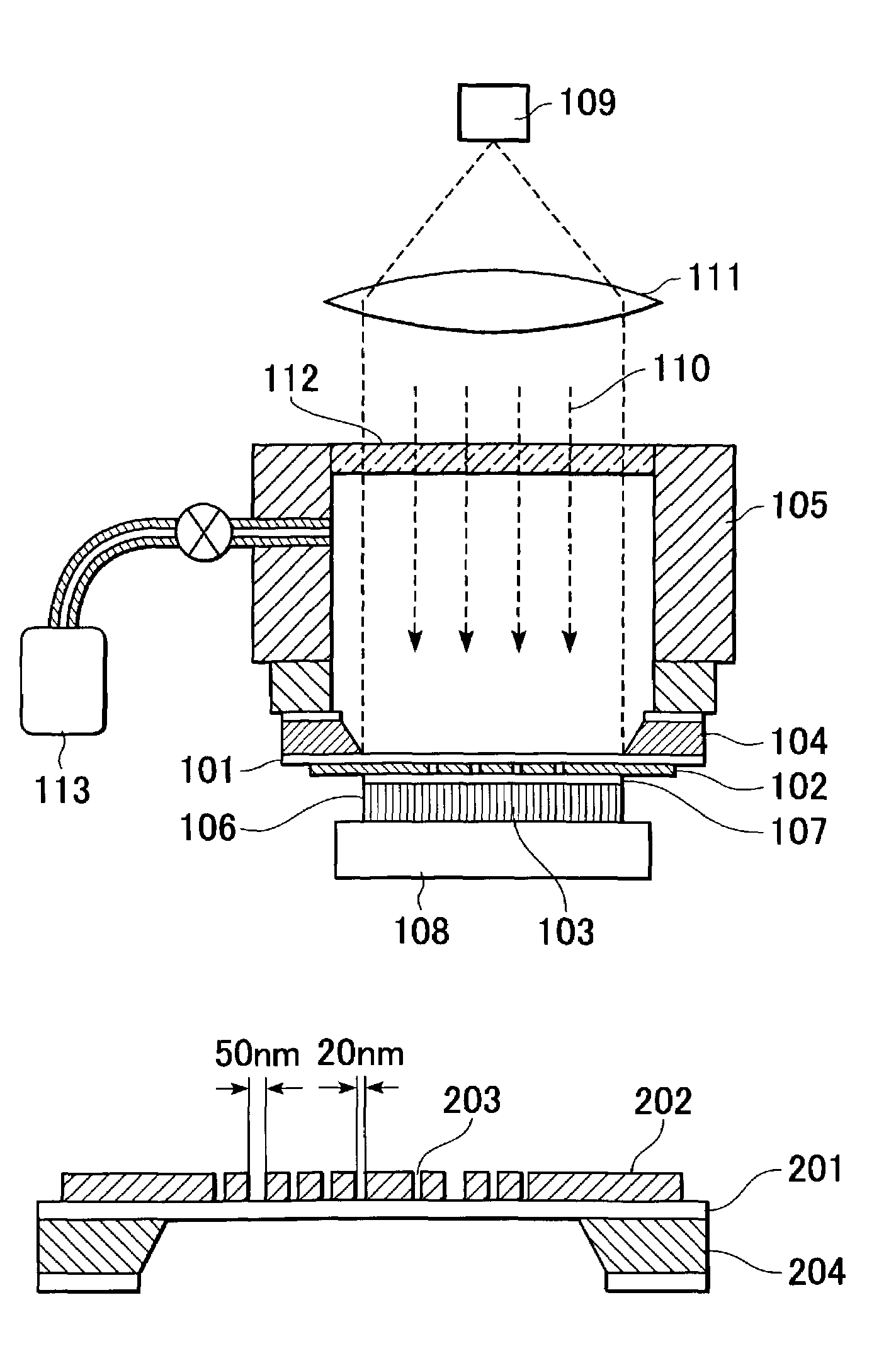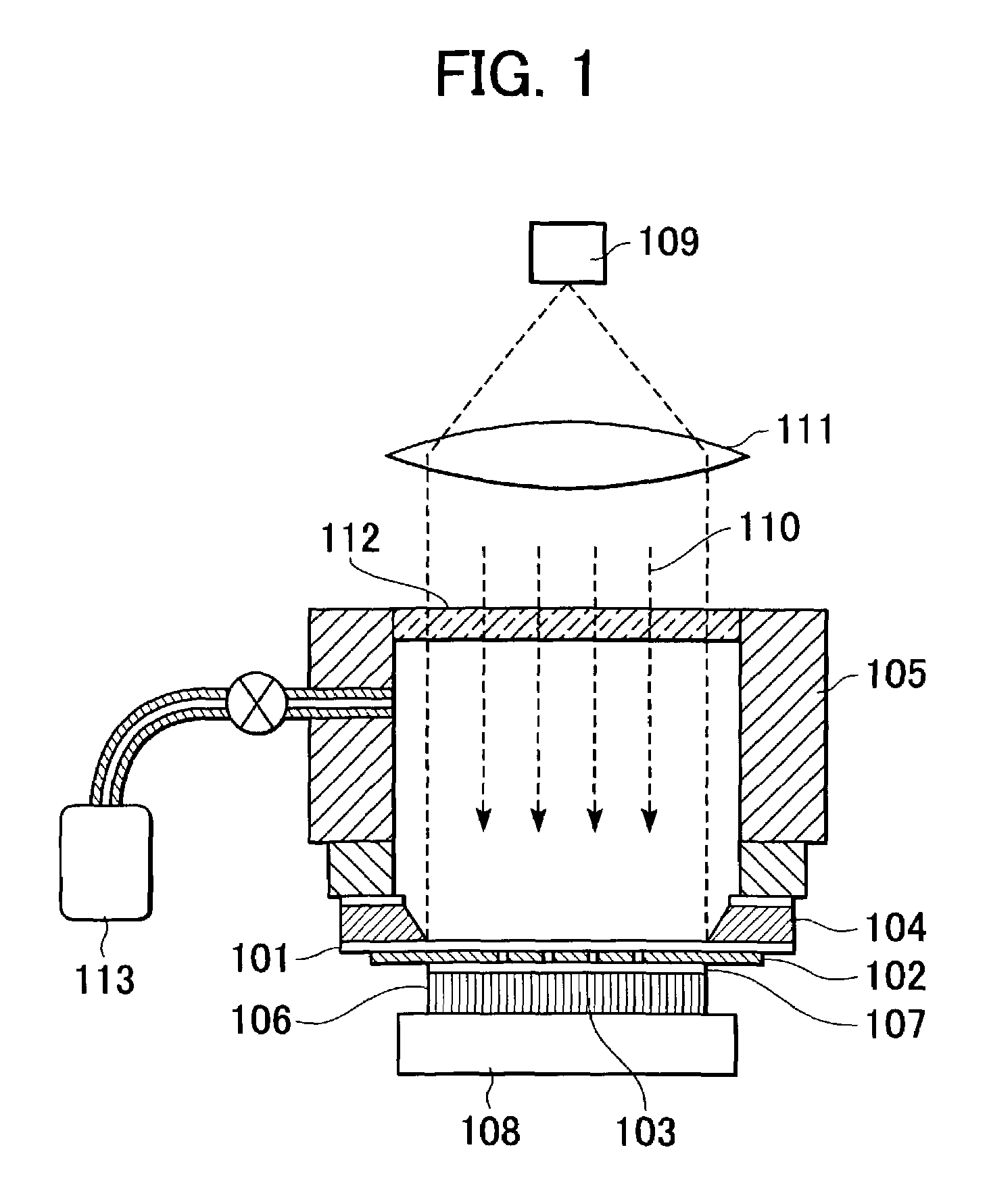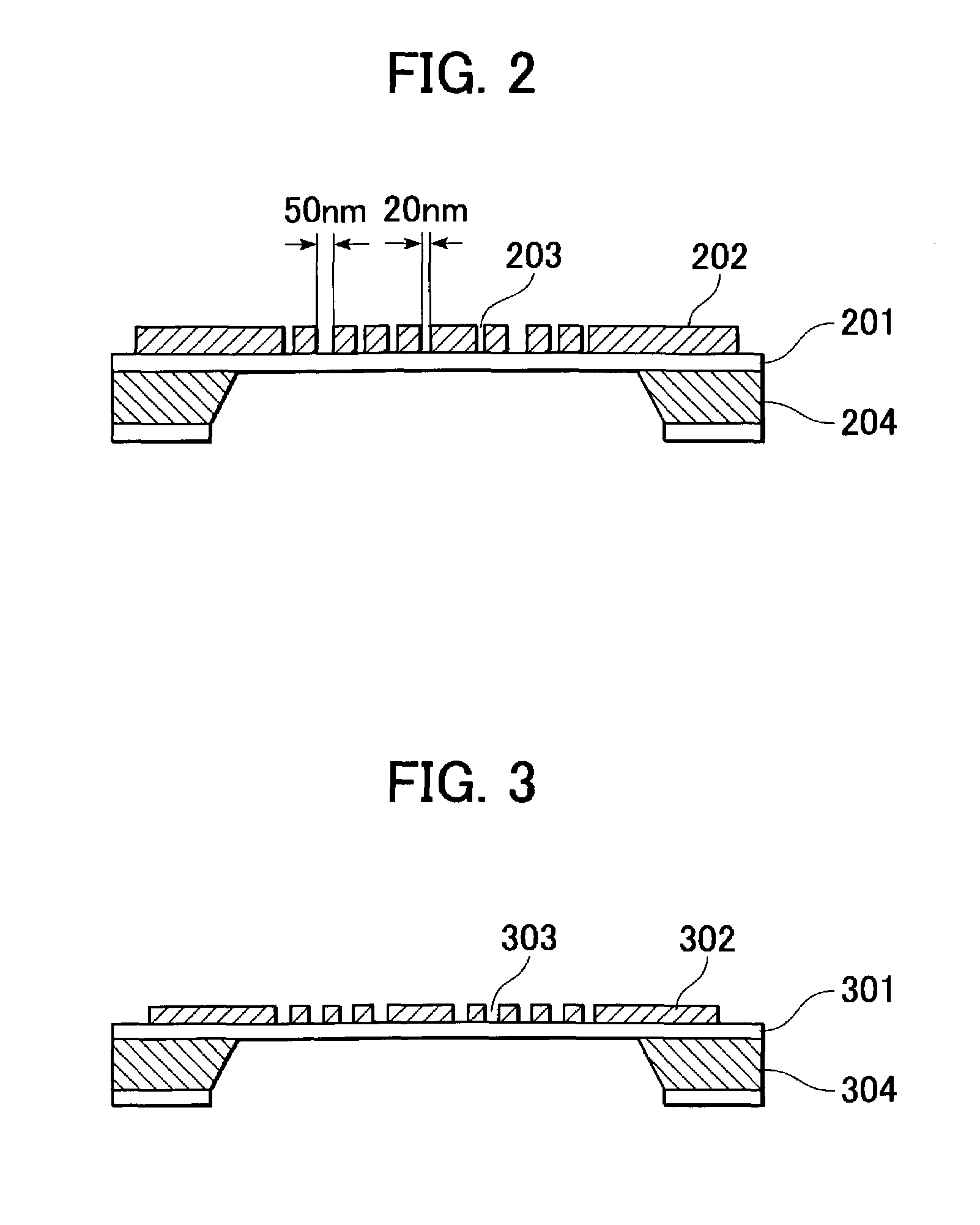Photomask for near-field exposure and exposure apparatus including the photomask for making a pattern
a near-field exposure and pattern technology, applied in the field of near-field light exposure photomasks, can solve the problems of low throughput of lithographic apparatus including the near-field optical microscope, the inability to disclose or suggest the dependence of the light intensity right below the aperture on the thickness, and the inability to solve the problem of photolithography
- Summary
- Abstract
- Description
- Claims
- Application Information
AI Technical Summary
Benefits of technology
Problems solved by technology
Method used
Image
Examples
first embodiment
[0035]In the first embodiment, the thickness of the shading member is controlled within an appropriate range to reduce a difference in light intensity right below apertures having different widths to 20% or less, resulting in uniform light exposure of a resist disposed right below the apertures. Thus, a resist pattern including lines having different widths can be readily exposed at one time. The difference in light intensity of 20% or less is a requirement for a practical process control that can suppress variations in patterning process conditions such as exposure time and developing time caused by the photomask. The difference in light intensity is preferably 10% or less, and more preferably 0%.
[0036]The first embodiment will now be described in further detail with reference to the drawings. FIG. 2 is a cross-sectional view of a photomask in accordance with the first embodiment, and FIG. 1 is a schematic cross-sectional view of an aligner having the photomask for evanescent light...
second embodiment
[0046]As described above, the fine aperture with reflectors at the two ends functions as a resonator in the photomask, and the wavelength of the propagation mode in the fine aperture depends on the width of the fine aperture. Thus, the transmitted light volume and the light intensity right below the aperture in the resonator is represented by a function of the ratio of the resonator length to the shading film thickness and the width of the fine aperture.
[0047]When the rate of change in the light intensity to the width of the aperture is controlled within the above range, the change in the light intensity right below the aperture can be suppressed. As a result, the change in size in the resist pattern can be suppressed. More specifically, the light intensity can be controlled within a variation of 2% or less when the aperture width varies by 1 nm. A change in light intensity is within 20% when the width of the fine aperture varies by 10 nm. The difference in light intensity of 20% or...
third embodiment
[0053]As described above, the fine aperture with reflectors at the two ends functions as a resonator in the photomask, and the wavelength of the propagation mode in the fine aperture depends on the width of the fine aperture. The length of the resonator corresponds to the thickness of the shading member. The light intensity right below the aperture is represented by a function of the thickness of the shading member and is a local maximum. With reference to the local maximum intensity, 0%-less to 50%-less light intensity may be used for exposure for achieving a large light volume right below the aperture and a sufficiently reduced light volume at the shading portion. Herein, “50%-less light intensity” represents 50% reduction in the light intensity, and is a requirement for a practical process control that can suppress variations in patterning process conditions such as exposure time and developing time caused by the photomask.
[0054]Furthermore, the rate in change in the light intens...
PUM
| Property | Measurement | Unit |
|---|---|---|
| width | aaaaa | aaaaa |
| width | aaaaa | aaaaa |
| wavelengths | aaaaa | aaaaa |
Abstract
Description
Claims
Application Information
 Login to View More
Login to View More - R&D
- Intellectual Property
- Life Sciences
- Materials
- Tech Scout
- Unparalleled Data Quality
- Higher Quality Content
- 60% Fewer Hallucinations
Browse by: Latest US Patents, China's latest patents, Technical Efficacy Thesaurus, Application Domain, Technology Topic, Popular Technical Reports.
© 2025 PatSnap. All rights reserved.Legal|Privacy policy|Modern Slavery Act Transparency Statement|Sitemap|About US| Contact US: help@patsnap.com



